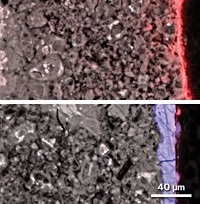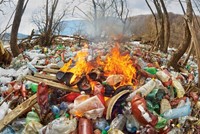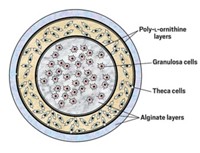Advertisement
Grab your lab coat. Let's get started
Welcome!
Welcome!
Create an account below to get 6 C&EN articles per month, receive newsletters and more - all free.
It seems this is your first time logging in online. Please enter the following information to continue.
As an ACS member you automatically get access to this site. All we need is few more details to create your reading experience.
Not you? Sign in with a different account.
Not you? Sign in with a different account.
ERROR 1
ERROR 1
ERROR 2
ERROR 2
ERROR 2
ERROR 2
ERROR 2
Password and Confirm password must match.
If you have an ACS member number, please enter it here so we can link this account to your membership. (optional)
ERROR 2
ACS values your privacy. By submitting your information, you are gaining access to C&EN and subscribing to our weekly newsletter. We use the information you provide to make your reading experience better, and we will never sell your data to third party members.
Environment
Newscripts
Fish Oil For Chickens, Biomedical Use For Digital Waste
by Lauren K. Wolf
August 3, 2009
| A version of this story appeared in
Volume 87, Issue 31

Fish oil supplements and foods fortified with OMEGA-3 FATTY ACIDS are all the rage these days. It's hard to find a disease or medical condition that researchers somewhere haven't indicated might respond favorably to the polyunsaturated compounds in those products. And now omega-3s could even go from being "heart healthy" for humans to being "hen healthy."
The U.K.'s Biotechnology & Biological Sciences Research Council (BBSRC), in partnership with egg production company Noble Foods, recently awarded John Tarlton of the University of Bristol, in England, some $2.8 million to study the benefits of an omega-3-supplemented diet in egg-laying hens. Specifically, Tarlton's research team will look at improving bone health in hens. The industrially valuable birds have been breaking their bones left and right.
According to Tarlton, selective breeding methods and optimized diets in laying hens have led to increased egg production in the past few decades but have also likely compromised skeletal strength in the birds. "Bone is used by hens as a source of calcium in production of egg shells," he tells C&EN.
Weakened skeletal structures are particularly problematic for free-range hens that roam around hazardous housing structures; bone breakage in these flocks is on the rise, with the majority of birds in some free-range systems suffering broken bones, Tarlton says. The consequences of this increase are both economic and bird-welfare-related. "Injured hens produce far fewer eggs," he points out. Also, the birds show clear signs of pain, and, Tarlton notes, "many could die from their injuries."
Imparting a further urgency to Tarlton's work is the European Union's Laying Hens Directive, which bans all conventional cage systems by 2012 and thus requires approximately 18 million hens to be transferred to free-range systems.
Tarlton's preliminary studies on free-range hens fed omega-3-supplemented diets have shown a significant reduction in broken bones among the birds—up to 60%. The current three-year BBSRC-funded project will compare the effects of a high-omega-3 diet to a standard egg-layer's diet for 16 flocks of 1,500 hens each. In addition to improving hen welfare, Tarlton says, "we plan to demonstrate how this could help human patients suffering from osteoporosis."

In another case of an EU directive spurring scientific advances, researchers at the University of York, in England, are investigating ways of extracting and repurposing chemical compounds from DIGITAL WASTE—specifically from liquid-crystal displays (LCDs). The team, which includes members from both York's Green Chemistry Centre of Excellence (GCCE) and its Liquid Crystal group, recently published work in the journal Green Chemistry demonstrating the extraction of polyvinyl alcohol (PVA) from LCD screens and the potential of the compound, which is biocompatible, for use in tissue scaffolds and drug delivery systems (DOI: 10.1039/b906607a).
In 2002, the EU issued the Waste Electrical & Electronic Equipment Directive, which requires LCDs greater than 100 cm2 in size to be disassembled before disposal. Because of the deluge of electronic waste worldwide, "it is important that we find ways of recycling the elements of LCDs," says James H. Clark, head of York's GCCE.
To extract PVA from an LCD panel, the York team soaked the display's polarizing films in water and dried the separated PVA, which in LCDs is complexed with iodine, in a vacuum oven. To then demonstrate PVA's potential use in biomedical applications, the group gelled the complex in water and "froze in" a mesoporous structure, Clark tells C&EN.
The final extracted PVA-iodine solid material had a surface area of 95.0 m2/g, which, Clark says, should be high enough for use in tissue scaffolds and other applications. He adds that he hopes this proof-of-concept study helps "encourage others to look at what we call waste as more of a resource than a problem."
Lauren Wolf wrote this week's column. Please send comments and suggestions to newscripts@acs.org.





Join the conversation
Contact the reporter
Submit a Letter to the Editor for publication
Engage with us on Twitter